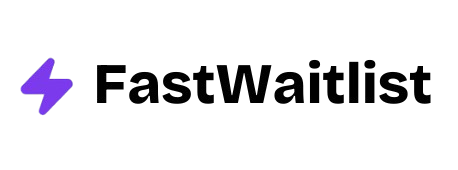
Introduction
Software as a Service (SaaS) has become a cornerstone of modern business operations. As the industry grows, so does the competition. For SaaS companies, a well-crafted marketing strategy is not just beneficial—it's essential for survival and growth. This guide explores 15 key tactics that can propel your SaaS business forward in 2025. We'll dive into practical approaches, from content marketing to data-driven decision making, giving you the tools to outpace your competitors and attract more customers.
Understanding SaaS Marketing Fundamentals
The Unique Challenges of SaaS Marketing
Marketing SaaS products comes with its own set of challenges. Unlike physical products, software is intangible, making it harder for potential customers to grasp its value immediately. This often leads to longer sales cycles as buyers need more time to understand and evaluate the product.
Another key challenge is the importance of customer retention. In the SaaS model, acquiring a customer is just the beginning. The real value comes from keeping them subscribed over time. This puts a heavy emphasis on not just attracting new users, but also on keeping existing ones happy and engaged.
Key Metrics for SaaS Marketing Success
To gauge the effectiveness of your SaaS marketing efforts, you need to track the right metrics. Here are some of the most crucial ones:
-
Customer Acquisition Cost (CAC): This measures how much it costs to acquire a new customer. It's calculated by dividing your total marketing and sales expenses by the number of new customers acquired.
-
Lifetime Value (LTV): This predicts the total revenue a business can expect from a single customer account throughout their relationship. A higher LTV compared to CAC indicates a healthy, sustainable business model.
-
Churn Rate: This shows the percentage of customers who stop using your service over a given period. A low churn rate is crucial for long-term success in SaaS.
-
Monthly Recurring Revenue (MRR): This is the predictable total revenue generated by all active subscriptions in a month. It's a key indicator of your business's health and growth.
Building a Strong SaaS Brand
Creating a strong brand is crucial in the crowded SaaS market. Start by developing a unique value proposition that clearly communicates what sets your product apart. This should be concise, memorable, and focused on the specific problems your software solves.
Consistency is key in brand building. Develop a brand voice and visual identity that reflects your company's values and resonates with your target audience. Use this consistently across all your marketing channels, from your website to your social media profiles.
Establishing thought leadership in your niche can significantly boost your brand's credibility. Share your expertise through blog posts, whitepapers, or speaking engagements at industry events. This not only helps attract potential customers but also positions your brand as a trusted authority in your field.
15 Proven SaaS Marketing Tactics for 2025
1. Content Marketing for SaaS
Content marketing remains a powerhouse strategy for SaaS companies. It's an effective way to educate potential customers about your product and demonstrate your expertise. Start by creating a content calendar that outlines topics, formats, and publication dates. This helps ensure a steady stream of valuable content.
Focus on creating educational content that addresses your audience's pain points and questions. This could include how-to guides, industry trend analyses, or case studies showcasing your product's success. Remember, the goal is to provide value, not just promote your product.
Don't limit yourself to just blog posts. Repurpose your content across multiple channels to maximize its reach. For example, a detailed blog post could be turned into an infographic for social media, a script for a YouTube video, or talking points for a podcast episode.
2. Search Engine Optimization (SEO)
A strong SEO strategy is crucial for increasing your SaaS product's visibility in search engine results. Start with thorough keyword research to identify terms your potential customers are using to find solutions like yours. Tools like Ahrefs or SEMrush can be invaluable for this process.
Once you've identified your target keywords, optimize your website's on-page elements. This includes using keywords in your page titles, headers, and meta descriptions. Also, ensure your website's structure is clean and easy for search engines to crawl.
Building high-quality backlinks is another crucial aspect of SEO. Reach out to industry publications, participate in expert roundups, or create shareable content that naturally attracts links. Remember, the quality of backlinks matters more than quantity.
3. Pay-Per-Click (PPC) Advertising
PPC advertising, particularly through platforms like Google Ads and LinkedIn Ads, can be highly effective for SaaS companies. It allows you to put your product in front of potential customers who are actively searching for solutions like yours.
When crafting ad copy for SaaS, focus on the specific problems your product solves. Use strong, action-oriented language and highlight your unique selling points. For example, instead of just saying "Project Management Software," try "Streamline Your Workflow: Save 5 Hours a Week with Our Project Management Tool."
Targeting the right keywords is crucial for PPC success. While broad keywords might bring in more traffic, they're often more expensive and less likely to convert. Instead, focus on long-tail keywords that indicate high intent, such as "best project management software for remote teams."

4. Free Trial and Freemium Models
Offering a free trial or a freemium model can be an effective way to attract new users to your SaaS product. It allows potential customers to experience the value of your product firsthand, reducing the perceived risk of purchase.
When implementing a free trial, consider the optimal length. Too short, and users might not have enough time to fully explore your product. Too long, and they might lose urgency to convert. Most SaaS companies find that a 14 to 30-day trial period works well.
For freemium models, carefully consider which features to include in the free version. It should provide enough value to showcase your product's capabilities, but also leave users wanting more from the paid version.
5. Email Marketing Automation
Email marketing remains one of the most effective channels for SaaS companies. It allows you to nurture leads, onboard new users, and keep existing customers engaged. The key to success is personalization and automation.
Start by segmenting your email list based on factors like user behavior, subscription status, or engagement level. This allows you to send more targeted, relevant messages. For example, you might send different content to active users versus those who haven't logged in for a while.
Create automated drip campaigns for different stages of the customer journey. This could include a welcome series for new sign-ups, feature announcement emails for existing users, or re-engagement campaigns for inactive accounts. Tools like Mailchimp or HubSpot can help you set up these automated flows.
6. Social Media Marketing
Social media platforms offer SaaS companies a way to build brand awareness, engage with their audience, and drive traffic to their website. The key is to choose the right platforms where your target audience is most active.
For B2B SaaS companies, LinkedIn is often a goldmine. It's great for sharing thought leadership content, connecting with decision-makers, and showcasing your company culture. Twitter can be effective for real-time engagement and customer support.
Create a mix of content types to keep your social media presence engaging. This could include product updates, behind-the-scenes glimpses of your team, user testimonials, or educational content. Remember to encourage interaction by asking questions and responding promptly to comments.
7. Referral Marketing Programs
Word-of-mouth remains a powerful marketing tool, especially for SaaS products. A well-designed referral program can turn your satisfied customers into brand advocates, bringing in new users at a lower cost than traditional advertising.
When designing your referral program, make sure the incentives are attractive to both the referrer and the new user. This could be a discount on their subscription, extra features, or even cash rewards for successful referrals.
Make it easy for users to refer others. Provide them with unique referral links or codes, and consider creating pre-written messages they can easily share on social media or via email. Tools like ReferralCandy can help you set up and manage your referral program effectively.
8. Product-led Growth Strategies
Product-led growth is a strategy where the product itself is the main driver of customer acquisition, conversion, and expansion. This approach has gained significant traction in the SaaS world, with companies like Slack and Dropbox leading the way.
The key to product-led growth is creating a user experience so good that it naturally encourages adoption and sharing. This starts with a strong focus on user onboarding. Create in-app tutorials, tooltips, or even interactive guides to help new users quickly understand and start using your product's key features.
Encourage viral adoption by building sharing and collaboration features directly into your product. For example, a project management tool might allow users to invite team members directly from within the app, spreading usage organically within organizations.
9. Account-Based Marketing (ABM)
Account-based marketing is a highly targeted approach where marketing and sales teams work together to target best-fit accounts and turn them into customers. This strategy can be particularly effective for B2B SaaS companies with high-value products.
Start by identifying your ideal customer profile and creating a list of target accounts that match this profile. Then, develop personalized marketing campaigns for each account or account type. This could include customized content, personalized ads, or even direct mail campaigns.
Align your sales and marketing teams closely for ABM success. Use tools like Terminus or Demandbase to coordinate your efforts and track engagement across different channels and touchpoints.
10. Video Marketing for SaaS
Video has become an increasingly important medium for SaaS marketing. It's an effective way to explain complex products, showcase features, and tell your brand story in an engaging format.
Create product demo videos that clearly show how your software works and the problems it solves. These can be particularly effective for landing pages or as part of your onboarding process. Customer testimonial videos can provide social proof and help potential customers understand the real-world benefits of your product.
Don't forget about using video for customer support and education. Create a library of how-to videos or feature explanations that users can refer to when they need help. This can reduce the load on your support team and improve user satisfaction.

11. Influencer Marketing and Partnerships
Influencer marketing isn't just for B2C brands. In the SaaS world, partnering with industry influencers and thought leaders can significantly boost your credibility and reach.
Identify influencers who are respected in your niche and whose audience aligns with your target market. These could be industry analysts, popular bloggers, or executives at non-competing companies. Engage with them authentically before proposing any collaboration.
Collaborations could take many forms, from co-created content to product reviews or joint webinars. Always ensure that the partnership provides value to the influencer's audience, not just promotional benefit for your brand.
12. Customer Success and Retention Marketing
In SaaS, customer retention is just as important as acquisition. Implement a robust customer success program to ensure your users are getting the most value from your product.
Create targeted retention campaigns based on user behavior. For example, if a user hasn't logged in for a while, send them an email highlighting new features or success stories from similar users. Regular check-ins, whether automated or personal, can help identify and address any issues before they lead to churn.
Actively seek and act on customer feedback. Use surveys, in-app feedback tools, or even personal calls to understand what your users love about your product and where they're struggling. Use this information to improve your product and your marketing messages.
13. Community Building and Engagement
Building a community around your product can be a powerful way to increase user engagement and loyalty. It provides a platform for users to share tips, ask questions, and connect with others facing similar challenges.
Consider creating a user forum or online community where your customers can interact. Platforms like Discourse or Circle can be great for this. Actively moderate and participate in these communities to foster engagement and gather valuable user insights.
Host virtual events or webinars to bring your community together. These could be product training sessions, industry discussions, or Q&A sessions with your team. Encourage user-generated content by running contests or featuring user stories in your marketing materials.
14. Conversion Rate Optimization (CRO)
Continuously optimizing your website and signup process is crucial for maximizing the return on your marketing efforts. Start by identifying the key conversion points in your user journey, such as your homepage, pricing page, or signup form.
Use A/B testing to experiment with different versions of these pages. Test elements like headline copy, button colors, form fields, or page layouts. Tools like Optimizely or Google Optimize can help you set up and run these tests.
Don't forget about optimizing your user onboarding process. The first few minutes of a user's experience with your product are crucial. Use tools like Appcues to create smooth, personalized onboarding flows that guide users to their first "aha" moment with your product.
For companies looking to validate product ideas or grow their email lists efficiently, FastWaitlist can be an excellent tool. It allows you to create and optimize waitlist pages, helping you gauge interest in new features or products before fully developing them.
15. Analytics and Data-Driven Decision Making
In the data-rich world of SaaS, making decisions based on solid analytics is crucial. Implement robust analytics tools to track user behavior, engagement, and conversions across your marketing funnel.
Set up key performance indicators (KPIs) for each of your marketing channels and campaigns. These could include metrics like customer acquisition cost, conversion rates, or customer lifetime value. Regularly review these KPIs and use the insights to inform your marketing strategy adjustments.
Don't just collect data—act on it. Use tools like Mixpanel or Amplitude to dive deep into user behavior and identify opportunities for improvement. For example, if you notice a high drop-off rate at a certain point in your onboarding process, you can focus on optimizing that specific step.
Conclusion
Effective SaaS marketing in 2025 requires a multi-faceted approach. By implementing these 15 tactics, you can create a comprehensive strategy that attracts new users, retains existing customers, and drives sustainable growth for your business.
Remember, the key to success is continuous experimentation and optimization. What works today might not work tomorrow, so stay agile and be ready to adapt your strategy as the market evolves. Keep your focus on providing value to your users, and let that guide your marketing efforts. With persistence and the right approach, your SaaS business can thrive in the competitive landscape of 2025 and beyond.
